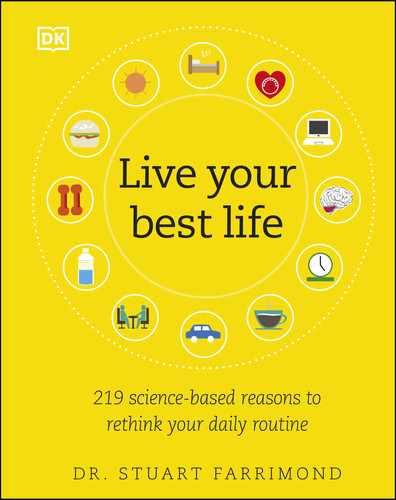Do I Need to Drink Eight Glasses of Water a Day?
Carrying around a bottle of water is a badge of healthy living, and we’re told to drink at least 8 glasses a day—however, this advice has more holes than a leaky bucket.
“Experts” urge us to drink water to flush out toxins and combat aging, but like so many health myths, the 8-glasses-a-day (or 2.5 liters) advice seems to have sprung from a misunderstanding. The US Food and Nutrition Board published advice in 1945 that a “suitable allowance of water for adults is 2.5 liters daily.” Had thirsty health-seekers not gulped down this snippet right away, they would have read the next sentence, which stated that most of this will come from food. Healthy adults, they advised correctly, had no need to drink beyond their thirst. Nevertheless, the idea stuck, and the bottled water industry pours great efforts into continuing to persuade us to drink 2.5 liters a day.
On a day-to-day basis, forcing yourself to drink that much water is unnecessary and doesn’t give credit for the body’s highly attuned ability to keep you on an even keel. Your brain’s thirst center continuously samples the blood to make you feel thirsty before you become dehydrated. Although overdrinking is rarely dangerous in normal circumstances, drinking large amounts of water during endurance sports may dilute body salts to perilously low levels, and can even be fatal.
Studies show there’s no health benefit to drinking more than the amount we need to satisfy our thirst (except perhaps the extra exercise from more trips to the toilet!).
Doctors recommend that adults living in a temperate climate and leading a sedentary lifestyle should drink about 6 cups (1.5 liters) of water-based drinks to make up for water lost through sweating, urination, and even the water vapor in their breath—the rest of the water you need will be obtained by eating a balanced diet.
You need to up your water intake if you’re sweating from exercise, hot weather, or if unwell with a fever, diarrhea, or vomiting. The elderly may need encouragement to drink, because the thirst centers in their brains become sluggish in old age; similarly, young children are less aware of their thirst drive and need to have scheduled drink breaks through the day.

hidden sources
You can easily receive a good proportion of your daily requirement of water from the food you eat.

n Double-tap image to read the labels
WATER IN AND OUT
This image shows how the water we take in compares with the water that exits the body in different ways, such as breathing, sweating, and urinating.
